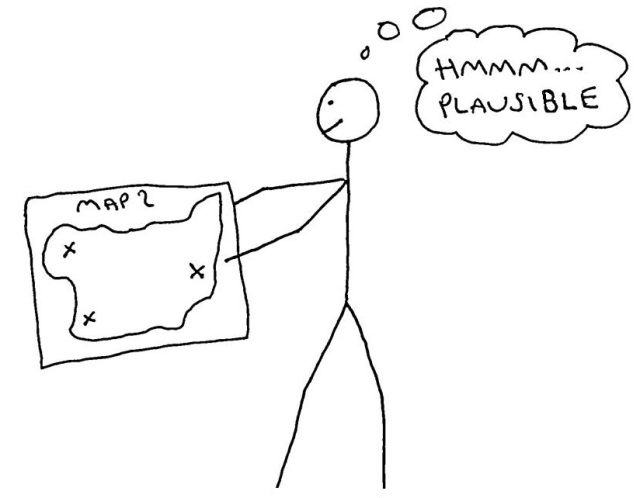“It’s just the starting point for asking questions”.

That’s what I often hear people say about this sort of thing. (Look at all the pretty colours).
Well, it’s not. And the questions are usually the wrong questions, asked of the wrong people, leading to the wrong answers about the wrong things, causing us to look in the wrong places for stuff that isn’t there, whilst missing the right things.
It’s a bit like this – let’s say Stick Child goes on a treasure hunt. He has the choice of three maps. Here’s the first one…

This blank map is the equivalent of having no performance data at all.
The next map looks like this…

This looks more like it doesn’t it? Well…no. Fortunately Stick Child is a bright little button and he knows the map was constructed by looking at last year’s map then guessing where the treasure is buried. This is pretty much the same as the binary comparison table.
Not wanting to waste his time digging in the wrong places, Stick Child opts for Map 3, which has been drawn using accurate information and presented in a format that will help him track down the treasure with ease. Here it is…

So there you go. Right measures, measured right, once again. If you’re wondering why binary comparisons keep getting slapped down, refresh your memory with this and other previous blogs. It’s a similar message to the last one with the guns, but I had to keep Stick Child away from them, otherwise something like this would have happened…

(Artwork by my Dad).
He’s off to do some target shooting of course. 😉

